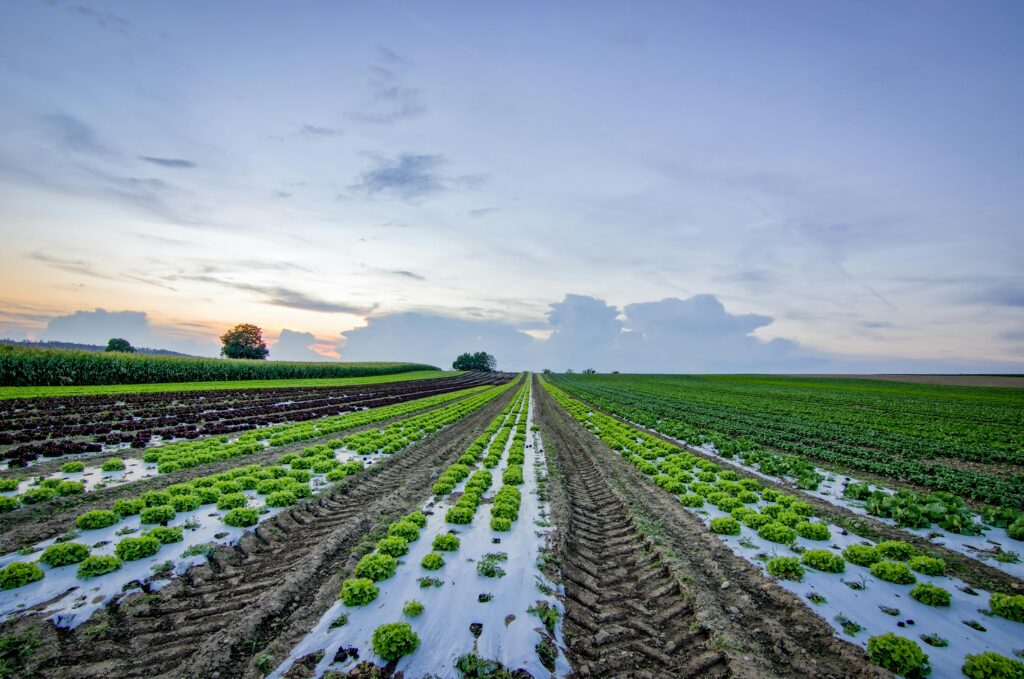THE CURRENT FOOD CHALLENGE
Our current food system has evolved over the last century into a diverse global network made up of various stakeholders.
However, this food system has become unsustainable. It fails to adequately address the needs of present populations, and future generations are now at an increased risk of experiencing more frequent and severe food supply shortages.
The focus needs to shift towards ensuring that we implement sustainable practices necessary to produce enough agricultural output to meet the changing dietary habits of a rapidly growing population.

BY 2050, WE WILL HAVE TO PRODUCE ENOUGH FOOD FOR 10 BILLION PEOPLE
- By 2050, we will add nearly 2.5 billion more people, most (~70%) expected to live in urban cities.
- We will need to grow ~60% more food than today’s current output to meet future demand needs. This increase is nearly equivalent to what all of humanity has grown in the past 8,000 years.
CURRENTLY 2.4 - 3 BILLION (29.6%) OF THE POPULATION ARE MODERATELY TO SEVERELY FOOD INSECURE
- 900 million people, which is 11.3% of the world’s population, suffer from severe food insecurity or chronic hunger.
- 3.1 billion people, or 42% of the world’s population, can’t afford to eat a healthy, balanced diet. Impacts like wars, COVID-19, or natural disasters have shown to worsen insecurity.
33% OF THE EARTH'S SOILS HAVE ALREADY BEEN DEGRADED
- Agriculture, deforestation, overgrazing & improper land use changes cause severe soil erosion and biodiversity loss. The risk of species extinction has worsened by ~10% over the last 25 years.
- The equivalent of one soccer field is eroded every 5 second. In certain soils it can take up to 1,000 years to regenerate and produce 2-3cm of soil.
- Soil erosion can lead up to 50% crop loss and compromise the well-being of at least 3.2 billion people around the world.
3.2 BILLION PEOPLE LIVE IN AGRICULTURAL AREAS WITH TO VERY HIGH WATER SHORTAGES OR SCARCITY
- 1.42 billion people live in areas of high or extremely high water insecurity
- 4 billion people experience water scarcity during at least one month of the year
- 72% of all global water withdrawals are used for agriculture
- Extreme and prolonged droughts are also stressing ecosystems, with dire consequences for both food production, as well as plant and animal species loss.
AGRICULTURE AND LAND USE CHANGE CONTRIBUTE TO ~17% OF GLOBAL GHG EMISSIONS
- Extensive agricultural value chain contributes significantly to global GHG emissions
- The majority of these emissions originate from nitrogen fertilizer production and application on land, as well as methane emissions from livestock
- The global warming potential (GWP) of nitrous oxide (N2O) and methane (CH4) are ~298 and ~25-28 times greater and shorter lived than that of carbon dioxide (CO2).
INCREASING CLIMATE VARIATION ARE ANTICIPATED TO NEGATIVELY IMPACT CROP YIELDS & COMMUNITIES
- Fluctuations in annual rainfall, average temperatures, heatwaves, weeds, pests, global CO2 levels, and sea levels pose significant threats to global crop production, impacting food security worldwide.
- Prolonged periods of droughts, and temperature extremes affect the reproductive phases of plant growth, resulting in reduced potential crop yields.
SUSTAINABLE AGRICULTURE SOLUTIONS
- In the face of growing population numbers and the ever-present challenges of climate change, it is becoming increasingly clear that we need to find innovative and sustainable solutions to our food production needs.
- One such solution is vertical and urban farming, which has emerged as an important tool in the sustainable agriculture toolbox.
- These farming methods can help us produce food in a way that is land efficient, sustainable, and resilient, even in the face of changing weather patterns and other environmental factors.
- For these reasons and many more, vertical and urban farming are quickly becoming an essential part of the broader effort to create a more sustainable and resilient food system for current and future generations.
START YOUR SUSTAINABLE FARMING JOURNEY
LOCAL & DECENTRALIZED PRODUCTION
Vertical and urban farming are key to addressing the growing demand for plant-based diets. By decentralizing food production, these farming practices can provide fresh, locally-produced vegetables and herbs right within city limits.
SPACE EFFICIENCY
These farming methods can transform underutilized urban spaces into productive farming areas, efficiently using vertical space to generate robust crop yields, which is particularly beneficial in densely populated areas.
WATER AND ENERGY EFFICIENCY
With the right design, vertical and urban farms can be highly water and energy efficient. Innovative irrigation and energy use techniques can reduce both water and energy consumption, making them optimal solutions for sustainable agriculture.
YEAR-ROUND PRODUCTION
Vertical and urban farming can potentially produce food all year round, ensuring consistent supply irrespective of seasonal variations and climatic conditions, thus enhancing food security.
REDUCED FOOD MILES
By situating food production closer to consumers, these farming methods significantly reduce 'food miles', thereby cutting back on greenhouse gas emissions from transportation and promoting a more sustainable food supply chain.
COMMUNITY RESILIENCE
Vertical and urban farming increases a community's resilience to food shortage crises by making it less dependent on traditional agricultural sectors. This safeguards urban populations against any potential disruptions to food supply chains.
